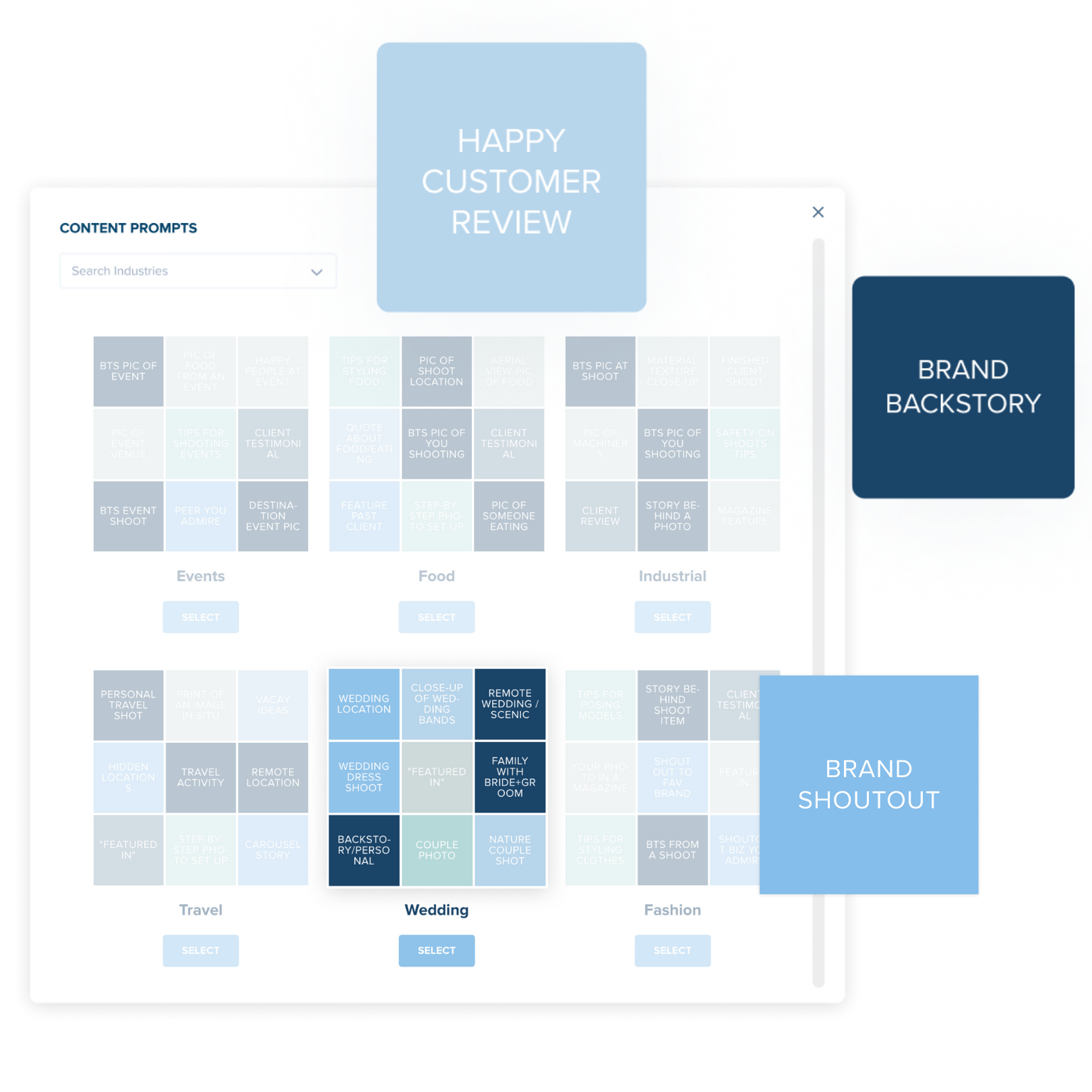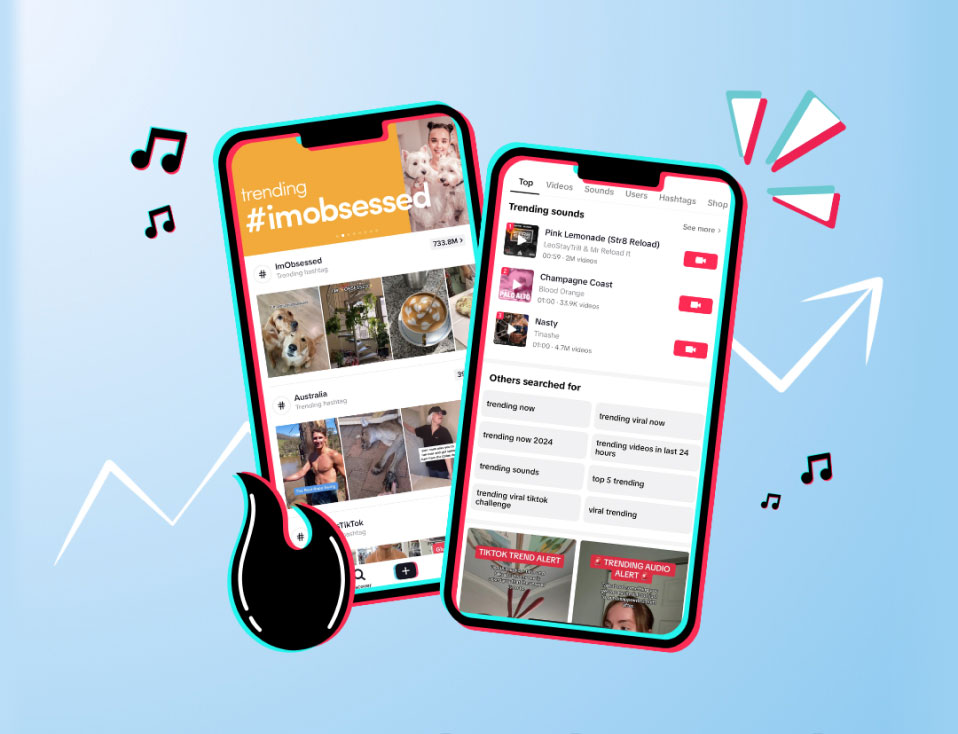What’s stopping you from achieving your business goals in 2024?
If you’ve clicked on this post, you’re probably feeling a lack of clarity around how to get your message out to the world.
You’ve heard a digital marketing strategy is important, but you don’t really know what it is or how to create one.
You feel:
A: Confused.
B: Frustrated.
C: Overwhelmed.
D: All of the above.
Leave that energy behind.
By the time you’re finished reading this post, you’re going to have a solid plan for your digital marketing strategy.
You’ll figure out your mission, your audience, your goals, and what channels you need to use to make those Benjamins.
Ready? Let’s dive in!
How to Create a Digital Marketing Strategy in 2024
Nail Your Big WHY and Unique Selling Points
Before you can start creating Instagram Ads and Plann’ing out your feed, you need to nail down your big WHY.
– What is your brand all about?
– What change do you want to see in the world, and what do you think is the best way to do it?
– What’s the #1 thing you want to achieve with your business?
Here’s a quick exercise you can do to get clarity on your mission:
Fill in the blanks:
I believe in _________ and I believe the best way to achieve that is ________.
Here’s an example:
If you’re a swimwear brand who makes bikinis out of plastic bottles, you might write:
“I believe in sustainability, and I believe the best way to achieve that is through creating reusable products and reducing plastic waste.”
Someone with the same business as you might write:
“I believe in innovation, and I believe the best way to achieve that is through creating products that help solve the world’s problems.”
Once you’re clear on your mission, start listing all the unique selling points (USPs) about your business.
– Are you all about female empowerment?
– Do you plant a tree with every purchase?
– What impact does your business have on the environment?
Your USPs strengthen your brand image.
It will take you from another business in a sea of millions, to one that customers recognise and choose over a competitor.
Create *Detailed* Buyer Personas
When you speak to your audience, do you have a *specific* person in mind?
Or are you shouting to the general masses flinging your words out at random and hoping something will stick?
If you’re a generalist, it’s time to niche down.
The most successful digital marketing strategies use detailed buyer personas. You want to know *exactly* who you’re trying to reach, right down to their favourite books and movies. their Hogwarts house.
To create a buyer persona that’s going to level up your online marketing strategy, you need:
– Demographics (age, location, gender).
– Desires, goals, aspirations, fears.
– Hobbies and interests.
– Job title and income.
So, er, how do you get this valuable information?
Hop onto your Google Analytics.
You can use it to identify:
– Top countries and cities.
– The dominating age groups and genders.
– Interests.
But if you want a more in-depth look into your audience’s mind, create a survey and send it out to your ideal customers.
Ask questions like:
– What are you struggling with most when it comes to [insert problem]?
– What have you tried in the past to solve [insert problem]? What are your biggest fears about [insert problem]?
You want to avoid making assumptions as much as possible. If you do, your digital marketing strategy might flop.
Tip: Are you getting zero traction? Reward people for answering your questions. Consider giving away something like an Amazon gift card or another grand prize.
Set SMART Goals for Your Digital Marketing Plan
Without clear goals, you can’t measure your progress.
You don’t want to pump money into a campaign, run out of ad spend and have zero sales to show for it.
SMART goals are:
– Specific.
– Measurable.
– Attainable.
– Relevant.
– Timely.
Here’s an example:
“I want to increase visits to my blog” is not a SMART goal.
A SMART goal is:
“I want to reach 60,000 visits a month to my blog every month within three months. I will do X, Y and Z to make it happen”.
Action Step:
1. Write down your big, long-term goals.
2. Break each one down into smaller monthly, weekly and daily goals.
3. Check that each one meets the SMART criteria and re-write the ones that don’t.
Choose Your Digital Marketing Methods
Okay, so you’ve got your main ingredients:
– Mission.
– Audience.
– Goals.
Now, it’s time to choose the right mix of digital marketing methods to help you achieve your goals.
Here are some of the channels you can include in your campaign:
– SEO (search engine optimisation).
– PPC (pay per click advertising).
– Instagram, Facebook, Twitter and Pinterest ads.
– Content marketing.
– Influencer marketing.
– Display advertising.
Argh, so many options! It feels daunting, right?
Kick decision fatigue in the butt by analysing each goal and asking which channel is the best fit.
Here’s an example:
– Is one of your goals more traffic to your website? Focus on SEO and content marketing.
– Do you want to increase brand awareness? Try a mix of social media and influencer marketing.
– Do you want to increase sales from your social media channels? Set up shoppable posts on Instagram, Facebook and Pinterest.
READ MORE: HOW TO SET UP SHOPPABLE INSTAGRAM IMAGES
Get Realistic With Your Budget
Before you start creating to-do lists and handing out marching orders, you need to know precisely how much your online marketing strategy is going to cost.
By having a set budget, you can avoid overspending and or throwing money at a channel that’s getting zero results.
Here comes the tricky part: How much should you spend?
It comes down to finding a balance between what you feel comfortable spending vs how much you need to spend to see the results you want.
Instead of spending hours trying to figure out a rough number, use a digital marketing budget calculator. All you need to do is answer the calculator’s six questions, and you’ll get a rough estimate.
It breaks down what you should spend on organic search, PPC, content, display, email marketing, and social media.
Take a Deep Dive into Your Analytics
You can’t start a digital campaign and leave it to run its course.
It’s like a toddler. It needs supervision.
You need to check in to make sure it’s not doing something wild like drawing on walls with a permanent marker or trying to eat Lego.
Set aside time in your schedule to analyse where you are every week. Create a spreadsheet and use it to track all your KPIs for the campaign.
You can track metrics like:
– Sales.
– Customer retention rate.
– Social media engagement.
– Cost per click.
– Site traffic.
If you’re not hitting your goals, it’s time to reassess and see what you need to change to get back on track.
Track Your Efforts With Our Marketing Tracker
![]()
There’s no point putting in all this effort into your marketing and not measuring your results. You need shiny hard data to tell you what’s working and what’s not!
Luckily we’ve got just the thing for you to keep track of it all — our marketing performance tracker. This easy-to-use template has been designed to help you keep track of your online performance and goals across multiple platforms!
Make a copy of our marketing performance tracker and start adding in your own goals and data
Start Taking Action On Your Marketing Strategy
Follow the actionable steps above, and you’ll have a bonafide digital marketing strategy. Get cracking on putting together a “to-do list” to really make sure you have it all covered!
Once you know your action steps, use Plann to start scheduling and analyzing your content.
Plann’s Calendar gives you a birds-eye view of your entire month and gives you the tools you need to improve Instagram engagement.
Say goodbye to feeling overwhelmed, frustrated and confused when it comes to your business in 2024!











